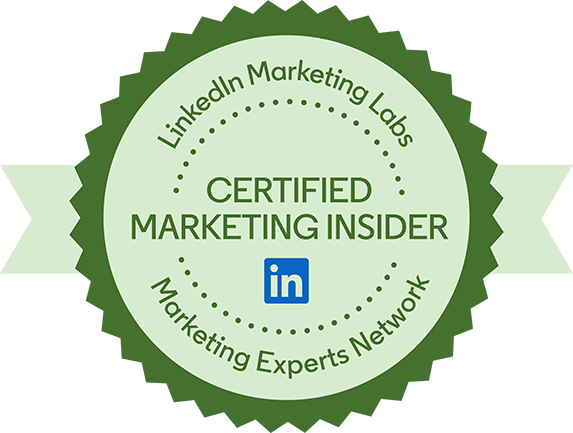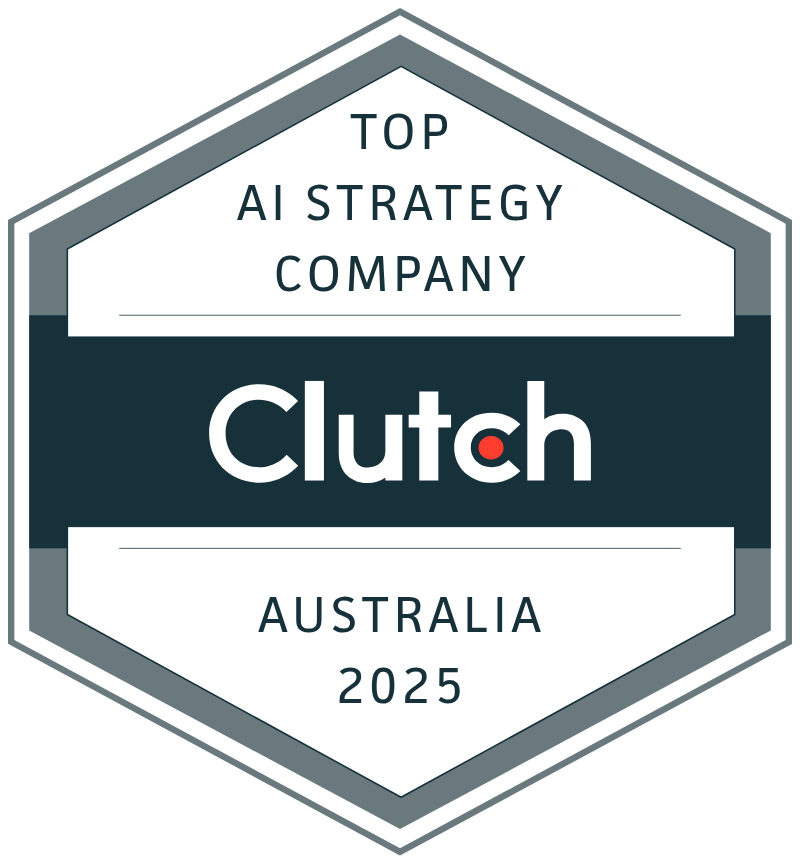The Ultimate Guide to Enterprise Lead Generation: Strategies for 2024 and Beyond
Date : September 13, 2024 By
Contents
- 1 The definition of an enterprise lead
- 2 Important trends in enterprise lead generation
- 3 A guidance on creating a comprehensive enterprise lead generation strategy
- 4 Applying technology to enterprise lead generation
- 5 Enterprise lead generation and the measurement of success
- 6 Examples and case studies from my experience
- 7 Conclusion
- 8 Frequently Asked Questions
Key Takeaways
- Enterprise lead generation targets high-value prospects with campaigns designed for large enterprises.
- It provides a multi-channel approach via account-based marketing and other channels.
- Read the article to discover how to enhance your enterprise lead generation and improve conversions!
Enterprise lead generation has become one of the most critical factors for business growth in recent years. The ability to generate and nurture high-value enterprise leads is an incredibly valuable asset in an environment as competitive as the modern B2B landscape. The goal of this comprehensive guide is to explain enterprise lead generation as thoroughly as possible, with emerging trends, cutting-edge strategy examples, and best practices that can substantially improve any business’s standing.
Enterprise lead generation differs significantly from the traditional B2B marketing approach for small and mid-sized leads, and there are several factors that can be used to confirm this statement:
- Intense competition. Large enterprise clients are coveted by various marketing campaigns simultaneously, meaning that the competition for their budgets or even their attention is incredibly high.
- Tremendously long sales cycles. Sustained engagement and continuous nurturing are paramount for enterprise lead generation since deals often take months or even years to complete.
- Resource-draining processes. Efficiency is an important factor for lead generation since enterprise leads often demand plenty of resources, including budgets and work time.
- Multiple stakeholders. A multi-faceted approach to lead generation and nurturing is practically mandatory since most large organizations include two or more decision-making positions across several departments.
Nevertheless, the potential of enterprise leads overshadows any of these disadvantages with ease, offering massive industry recognition and transformative growth of revenues.
The definition of an enterprise lead
Enterprise clients and their characteristics
Enterprise clients often serve as the most lucrative segment of the B2B marketplace. They often perform large-scale operations, employ thousands of people, and generate millions of dollars or more in annual revenue. The size of such organizations also often implies complex organizational structures with different teams, departments, and decision-making layers, which tends to generate plenty of challenges for the sales process.
The same logic could be applied to an average enterprise client’s needs – they are often multifaceted and complex. They rarely can be solved by simple one-note solutions. Since plenty of enterprises work on the global market, they often look for software that can scale to this kind of task, with global coverage and the ability to support businesses across different countries. Of course, there are plenty of other potential complexities that arise from expanding to the global market, be it the need for 24/7 support, regulatory compliance, localization, etc.
Enterprise clients are often planning their actions in the long-term, with a strategic approach to most purchasing decisions, which facilitates long-term partnerships with stable revenue streams instead of transactional relationships. Additionally, the sheer size of most enterprise clients makes it possible to expand the business within the same organization – which can be done by exploring cross-selling and upselling opportunities to different business units or departments in the same organization.
This kind of approach is moderately difficult to perform, considering how it needs a deep understanding of the client’s needs and challenges to work off of. In large organizations, most departments tend to have their own objectives and pain points, so adjusting your approach based on the target is highly recommended in most cases. Measurable success in previous projects is also a significant advantage for such clients if these projects were performed for the same company, making it significantly easier to position yourself as a strategic partner of the company that is interested in a company’s overall long-term success.
Security is another concern for enterprise clients; many companies tend to have their own strict vetting and onboarding processes built specifically with vendors in mind. Some of the most common requirements in these cases are proof of compliance, security audits, extensive product documentation, etc. The primary reason for that is the sheer scale on which enterprises operate – which directly translates into the massive cost that the company would have to pay for any data breach or non-compliance issue.
Differences in lead generation between small and large businesses
- The decision-making process in large companies often involves a number of stakeholders and even a board-level approval for large-scale purchases. The same process is much more streamlined in SMBs since the same decisions are made by either a single person or a very small group of individuals, which drastically simplifies the sales process.
- Enterprise sales processes have to include building long-term relationships with a number of individuals, including influencers, end users, technical evaluators, and, of course, decision-makers. From my experience, such practices have become practically mandatory over the years, with the competition being at an all-time high in different markets. Establishing long-lasting relationships with the entire buying center (every single person involved in the purchasing decision) is a necessity for enterprise clients in the majority of use cases. Comparatively, long-term business relationships are significantly less common in the SMB market since smaller companies have fewer decision-makers and their organizational structures are much simpler.
- Risk mitigation is a much more prevalent topic for large enterprises due to the fact that they can experience substantial operational and financial losses as a result of a single incident. As such, rigorous vendor evaluations are a commodity in the enterprise client market, including phased implementations, proofs of concept, and so on. Comparatively, smaller businesses are far more likely to make decisions based on their cost-effectiveness and short-term requirements since the potential financial or operational losses are drastically lower. This is why a lot of SMBs use off-the-shelf solutions in many situations, as they are easier and cheaper in terms of implementation.
- The average sales cycle is often very long for most enterprise clients, ranging between six months to more than one year. There are plenty of reasons why the sales process is this lengthy, including the potential consequences of large-scale implementation, the necessity for thorough and extensive evaluation, and a complex decision-making process with a variety of stakeholders. On the other hand, the SMB sales cycles often range from weeks to months at best, considering how the requirements of smaller companies are much more lax, and the number of stakeholders the sales process has to interact with is drastically lower.
- Most enterprises require a substantial amount of personalized content due to the fact that their integration scenarios and use cases are significantly more difficult. Requesting comprehensive case studies, detailed technical documentation, reference solution architectures, and robust demonstrations is normal in the enterprise-grade market. Conversely, most small and middle-sized companies are completely fine with standardized content if the solution itself can solve their issues effectively. The importance of product demos and case studies is still high here, but the content itself is far less custom-tailored and, thus, less expensive to produce.
The true value of enterprise leads
With that being said, the number of advantages that enterprise leads can provide is even bigger, vastly overshadowing any and all potential shortcomings or issues of the process:
- The potential revenue from a single enterprise deal is tremendous. Sometimes a single deal has the capability to completely transform the entire financial outlook of a business. In my experience, a single enterprise deal is often equal to dozens or even hundreds of regular contracts in value.
- The portfolio of practically any business can benefit greatly from having a well-known enterprise as the current or past client. The overall trust and credibility boost that recognizable brands can offer as clients makes it significantly easier to acquire other enterprise clients and even attract talent to the company as employees.
- Most enterprise clients are the direct opposite of a one-and-done deal. They seek strategic relationships in the long term, bringing in a steady stream of revenue that can be used as an opportunity for account expansion. Stability is what these clients value the most, and that includes both the services and the service providers.
- The sheer complexity of enterprise-grade customers drives innovation and boosts new feature development and adoption. This can benefit the company’s entire portfolio of clients after being tested and implemented with an enterprise-grade customer.
- Single-client relationships with enterprise companies can often lead to additional revenue streams being discovered via upselling and cross-selling. Many opportunities for expanding the company’s footprint within the client’s environment can be found within the same company, offering plenty of potential advantages in the long run.
This knowledge should serve as a great baseline for creating sophisticated enterprise lead generation strategies. A thorough understanding of all the value propositions, differences, and unique traits drastically reduces the complexity of developing a truly impressive lead generation strategy for enterprise clients.
Important trends in enterprise lead generation
Interactive content in a digital form
The enterprise space keeps evolving on a regular basis, and the same could be said for marketing methods. Interactive, engaging content is now the only option to stand out, capture, and maintain the attention of a prospect in the sea of creative advertisements. For example, interactive wallpapers can be used to create a more engaging experience for the end user by allowing them to click on different parts of a wallpaper to show different product features and 3D models or change environment types for the product in question.
The potential value of each prospect is now easier to quantify with various digital assessment tools and interactive calculators, creating business cases that are far more solid and tangible. There is also plenty of effort to try and use gamification in some of the content in order to create more engaging and unique content for the prospects – such as interactive thematic quizzes that end with a numerical score and a small reward, be it an exclusive wallpaper, a first purchase discount, a sweepstake entry, etc.
Even some of the old-school engagement types, such as Q&A sessions or live webinars, have to evolve to continue being relevant and valuable, offering a great way to build relationships with potential clients using real-time interactions. Q&A sessions now have to adapt to the digital form with live polls, audience-driven content, and interactive chats. Alternatively, webinars have to include new and unique elements to stay relevant and interesting, be it AR/VR elements, breakout sessions, poll participation rewards, and so on.
AI-powered platforms and automation capabilities
The combination of automation capabilities and artificial intelligence makes a lot of waves in the lead generation field. Sales teams can focus on the most promising prospects thanks to the AI-powered lead scoring and nurturing process that can analyze the incoming leads and prioritize the ones that have the highest conversion chances. Due to the longer sales cycles and a higher value per client, this advantage is far more valuable in the context of enterprise accounts compared with SMBs.
LLM-powered chatbots are capable of engaging prospects around the clock, scheduling meetings, and qualifying leads with little to no human intervention and zero downtime. Automated personalization can deliver custom-tailored content at scale (such as dynamic email campaigns with AI-powered personalization) to prospects who have shown interest in their behavior, which is a highly valuable factor for enterprise clients who tend to interact significantly better with highly personalized content. Predictive analytics allows for a relatively accurate forecast of what leads can become valuable customers through the power of trend and pattern analysis.
Improved decision-making process with data-driven choices
A more time-sensitive and relevant outreach can be achieved by using intent data from third-party sources. Enterprise-grade nurturing strategies can be significantly enhanced by using behavioral analytics data, making it easier to identify leads with the highest engagement level.
However, the existence of complex multichannel campaigns that are popular when dealing with enterprise clients can make it difficult to perform such operations. At the same time, the low number of total leads at the enterprise level drastically increases the potential value per lead, practically forcing marketers to use thorough personalization tactics in order to succeed.
Marketing resources can be allocated with a higher level of efficiency thanks to attribution modeling, offering the ability to analyze the touchpoints to find the ones that are the best in moving prospects along within the sales funnel. In my opinion, the necessity to work with personalized content for more than one stakeholder at once dramatically expands the marketing budget while also making it more difficult to calculate ROIs and other performance metrics.
Account-based marketing
Account-based marketing, or ABM, has been widely adopted in recent years as an incredibly effective lead generation strategy in the enterprise market. The idea behind an ABM lies in developing personalized marketing campaigns for every single high-value target that has been identified beforehand. ABM was made in order to align the efforts of sales and marketing departments, putting heavy emphasis on multi-channel outreach for the highest possible level of engagement.
All of the success measurements that ABM performs are done at the account level, which is drastically different from how most traditional leads are evaluated (with every single lead being evaluated individually). It is a highly personalized approach that can improve resource allocation efficiency while offering higher conversion rates in most cases due to the ability to focus on the most lucrative opportunities.
Highly personalized communication
Addressing all prospects by name is not nearly enough for the level of personalization that enterprise lead generation expects at this point. The marketing resources should be able to directly address the stakeholders’ concerns; this is what’s called role-based content creation.
A number of businesses even go as far as to create custom web experiences for specific target accounts, offering a highly personalized version of a microsite with personalized video messaging, personalized advertisements, personalized emails, and more.
A guidance on creating a comprehensive enterprise lead generation strategy
The overall importance of lead generation in the enterprise field should be relatively obvious by now, with all the numerous advantages and benefits it brings. However, most of these tactics are not going to work when used separately from the overall strategy – since lead generation is a comprehensive multifaceted process at its core.
As such, creating a detailed lead generation strategy is a good first step that everyone has to get through in order to start generating leads in a productive way. Of course, the process itself is going to differ significantly from one case to another, but I can offer a few general pieces of advice in order to simplify strategy creation for most marketers.
Proper target identification
One of the most fundamental parts of a lead generation strategy one could think of is the correct identification of your targets. There are a few key points that are worth mentioning in this process. The creation of the ICP, or an ideal customer profile, is the first step in identifying your target audience in the correct fashion. It can be achieved by analyzing behavioral characteristics, firmographics, technographics, and so on.
For example, one of my clients is an enterprise-grade backup vendor. If I wanted to create a very basic example of an ICP in this client’s field of work, it should look like this:
- Company Size
-
-
- Employee count: 50-200 employees
- Annual revenue: $50+ million
-
- Industry
-
-
- Defense, Military and Government as Primary Industries
-
- Technological Fit
-
-
- Capability to support hybrid cloud infrastructures
- Compatible with several enterprise platforms (Oracle, VMware)
- Support for multi-cloud environments (Azure, AWS)
-
- Pain Points
-
-
- Storage cost optimization
- Scalability of the backup system
- Compliance with global data regulations
- Backup security
- Low RTO & RPO
-
- Budget Alignment
-
-
- The annual budget is $500K
- Multiple stakeholders are involved in a decision-making process
-
- Buying Triggers
-
-
- Regulatory changes
- Licensing model changes of the previous vendor
- Recent security concerns
- Previous vendor lock-ins
-
- Key Decision-Makers
-
- Compliance officer
- Procurement officer
- CIO
- CTO
The next step would be to identify companies that match your ICP the most. The recent rise of AI-powered tools contributed a great deal to this particular step, offering a quick and detailed identification process for potential leads. My approach would be to use Apollo – a comprehensive engagement and sales intelligence platform that makes it easier to locate, reach, and interact with potential leads. It is very popular in B2B marketing, significantly simplifying the process of finding leads that match your ICP the most.
The company list that was created this way should also be prioritized using intent data in order to see what accounts have shown interest in your product or service since those accounts should be targeted first.
Another notable source of information at this stage is your existing client base since it can be used to identify specific characteristics that some of your clients might share. Some of the most common examples of such parameters and patterns include:
- Company size
- Preferred platforms
- Pre-integration challenges and post-integration benefits
- Most used features
- Upgrade patterns
- Regulation and compliance
- Support ticket patterns
- Common use cases, and more.
From my experience, close collaboration with the sales team is a necessity in the lead generation process to make sure that your target audiences are aligned between the sales and marketing departments.
Decision-maker engagement
The existence of several stakeholders and decision-makers within the same company is one of the more notable aspects of enterprise lead generation. Engaging with all of the stakeholders in the same business is incredibly important, even though it can be somewhat challenging.
Identifying every single potential stakeholder is a great starting point, in my opinion, and it can be done by mapping out a typical “buying committee” for your service or product – with positions such as technical evaluators, department heads, C-suite executives, and even end users, if necessary.
It is important to develop as much personalized content as possible for each stakeholder so that the overall message resonates with their priorities, concerns, pain points, etc. Other potential gateways towards building trust with your enterprise leads are employee advocacy programs and social selling techniques (only available for a specific range of platforms, such as LinkedIn or Xing).
The usage of multiple communication channels
The necessity to engage with several communication channels for the same client is one of the reasons why enterprise lead generation is often perceived as challenging. Every single prospect should be able to get a comprehensive multi-channel experience, which is usually delivered as a combination of personal and digital communication efforts with variable content types.
Consistent messaging and seamless experience are the primary targets of using several channels for enterprise lead generation. However, integrating a number of communication channels into a seamless stream of content for a specific account can be difficult, considering how many channels there are to begin with.
For example, the list of personal (face-to-face) communication channels consists of:
- Trade shows
- On-site workshops
- Practical demos
- Industry conferences
- Executive roundtables, and so on.
Alternatively, the range of digital communication channels includes:
- Webinars
- Virtual events
- Social media content
- Email marketing
- Retargeting campaigns
- Content syndication, and more.
Targeted content generation
Personalized content is the key element of the enterprise lead generation and nurturing processes. It is also important to remember that the content in question should also differ depending on the customer’s position in the buyer’s journey.
- The initial “awareness” stage should focus on showcasing the expertise of your company and addressing the customer’s concerns or pain points with industry trend reports, whitepapers, thought leadership articles, etc.
- The “consideration” stage of the buyer’s journey is where it would be a good idea to start providing content that proves the value of your product – be it product comparison guides, detailed case studies, etc.
- Most customers at the “decision” stage are usually very close to choosing a specific product or service already, so it is possible to facilitate the process in question with proof-of-concept proposals, custom product demos, and service implementation roadmaps.
As you can see, every single stage is associated with specific content types that work best in such situations. In my experience, it is still important to remember that all content should be created with the account’s objectives and pain points in mind to keep the personalization degree as high as possible at all times.
Ongoing tracking and refinement
Implementing flexible tracking capabilities into your marketing processes is just as important as any other element of an enterprise-focused marketing strategy. Accurate tracking and detailed analysis are essential when it comes to dealing with all the nuances of enterprise leads, with longer sales cycles and the involvement of multiple stakeholders in the process. Some of the most common elements of the tracking process are presented below.
- Performance metrics should be reviewed regularly to be able to adjust existing strategies with data-driven insights. In my experience, the enterprise funnel is not just about volume but also about the quality of each lead at different stages – especially when the leads in question are enterprise-grade. At this section, metrics such as sales cycle length, stakeholder engagement, churn rate, pipeline velocity, and lead qualification rate should be monitored and reviewed regularly.
- Comprehensive CRM systems can help with tracking the entire buyer’s journey with all the interactions and engagement opportunities. They can gather enormous amounts of data from every single touchpoint to offer a comprehensive overview of the entire funnel movement process. CRM systems also tend to offer plenty of other advantages, such as offering extensive collaboration opportunities between sales and marketing teams.
- Thorough win/loss analyses should provide clarity when it comes to factors that influence deal outcomes the most. Plenty of insights can be gathered from this analysis type, including the feature popularity, total engagement levels, challenges at different stages of the funnel, and more. All of this information can be presented as patterns when reviewing leads – and pattern analysis tends to offer plenty of insights on how to improve your marketing strategy in different ways, especially when a single average sales process tends to take over six months to finish (something that is common for enterprise clients).
The aforementioned CRM solutions are far more than just tracking solutions for the buyer’s journey. They can also be used to customize the sales approach, fine-tune the lead scoring model, improve resource allocation through lead segmentation to improve resource management, and so on.
As I have mentioned before, enterprise lead generation does differ significantly from the traditional lead generation pipeline – it is significantly longer, involves different stakeholders and thorough evaluation processes, but can bring massive value to the company if even one such deal is complete. All of these factors have to be kept in mind when analyzing the information above and refining your existing marketing efforts accordingly.
Applying technology to enterprise lead generation
Technology plays a vital role in the lead generation industry, especially when it comes to working on enterprise leads. If implemented correctly, technology can improve lead generation and nurturing efficiency while streamlining marketing processes and offering data-driven insights. The stakes are typically higher for large-scale organizations and enterprises, as well, putting even more emphasis on choosing the right technological solutions for implementation.
The overall market for marketing software is extraordinarily vast and highly competitive. There are four primary categories or groups of marketing tools that can significantly improve the life of an average marketer:
- Analytical tools, such as Google Analytics 360 or Adobe Analytics, are capable of analyzing marketing information and offering insights into customer behavior and other important topics. These solutions also excel at reporting, data centralization, and so on.
- CRM tools, such as Microsoft Dynamics 360 or Salesforce, offer extensive customer relationship management capabilities, streamlining complex and multi-faceted customer interaction processes. Most of these solutions can provide workflow customization, a multitude of integrations, and a variety of valuable insights.
- Automation tools, such as HubSpot Enterprise or Marketo Engage, provide plenty of customizable automation capabilities to be used in lead nurturing, email marketing, campaign management, and many other situations.
- AI-based lead scoring tools, such as XANT or 6sense, are created to offer predictive intelligence capabilities in order to analyze and suggest the most valuable leads out of the entire client range. These tools excel in helping sales and marketing teams with outreach effort targeting, which is extremely useful for large enterprises that have to operate large lead volumes on a regular basis.
All of these technologies can drastically improve the results of enterprise lead generation, and their effectiveness is only going to grow as the tools themselves evolve and update. However, it is important to remember that a lot of enterprise-centric solutions would have a much more unique and personalized feature set capable of meeting the requirements of large-scale companies and businesses.
Analytics and reporting solutions
Continuous improvement of the existing lead generation efforts can be made possible with the usage of advanced analytics and reporting solutions. There are three main examples of such tools that I want to bring up here:
- Funnel analysis solutions such as Hotjar, Heap, and Google Analytics 4 can be used to find drop-off points and bottlenecks in the lead generation process, making it obvious what areas of the sales funnel should be improved as soon as possible – be it with follow-up timing adjustments, messaging refinement, or even addressing common objections.
- Custom dashboards like Domo, Tableau, or Microsoft Power BI might not offer any kind of advanced analytical capability per se, but they often serve as a great way to centralize information from multiple sources, visualizing several key metrics at once for more seamless decision-making. That way, marketing and sales teams can identify trends and spot issues with a much higher efficiency than before.
- ROI measurement tools like HubSpot, Bizible, or Klipfolio make the topic of budgeting a lot easier to work with, since you can calculate the return on investment parameter for each separate marketing campaign or lead generation channel. Such calculations can help with attributing value to each marketing channel, which significantly simplifies resource allocation to make sure that the most effective strategies receive the highest amount of resources to work with.
Customer Relationship Management solutions
The biggest advantage of CRM solutions in the context of enterprise lead generation efforts is centralized sales-related information management. Solutions such as Salesforce, Zoho CRM, and Microsoft Dynamics 365 store every single piece of customer information in the same location, drastically improving the accessibility and coordination of any marketing effort. Of course, the benefits of CRMs do not stop here, either.
Activity tracking and pipeline management are just as important to the overall lead generation efforts. The former offers a detailed look into the entire customer’s journey by logging every single interaction with each prospect – which can help a lot when there are more than two decision-makers per single account, often making the process somewhat confusing. As for pipeline management, it provides convenient visualization and management capabilities for deals at various stages of the sales process. It is another highly convenient tool for enterprise lead generation, considering how many sales processes take an entire year or even longer.
Most CRM systems also boast extensive analytical and reporting capabilities, offering plenty of data-driven insights into different fields of marketing, which tends to offer various improvements to lead generation strategies as time goes on.
Marketing automation and lead scoring solutions
Since their inception, marketing automation tools have quickly become one of the most irreplaceable assets when it comes to the entire advertising field, let alone lead generation. The primary advantage of such tools is the ability to scale marketing efforts without losing a high degree of personalization – which is at its most important when dealing with an enterprise-level client base.
Marketing automation software consists of a wide selection of smaller tools and features, each with its own set of use cases and benefits. Email marketing, for example, is often considered the “heart” of marketing automation, making it significantly easier to generate personalized lead nurturing campaigns with products such as Iterable, ActiveCampaign, and Mailchimp. As mentioned before, personalized nurture campaigns offer case-specific content based on a number of characteristics and general client behavior, making sure that each account receives necessary information during different stages of the buyer’s journey.
Lead scoring is another notable feature in the marketing automation repertoire, offering a thorough and nuanced evaluation of every single lead by assigning point values based on their actions and characteristics. The ability to evaluate leads using software such as Everstring, LeanData, and Leadspace makes it significantly easier to focus the efforts of the sales teams on working with the most lucrative accounts, improving overall efficiency in the process. The proper lead scoring process can be invaluable in the context of enterprise marketing since every single sales process can take an entire year or more, and a client dropping out in the middle of that process means that all of the effort and resources are now wasted.
As for the more advanced capabilities of marketing automation, we can take a look at progressive profiling – a feature that enables information collection by using forms (Pardot from Salesforce, Marketo Engage from Adobe, etc.). Instead of overloading clients with long and complicated forms, these systems gather information bit-by-bit as time goes on while also improving the overall user experience as a result. It is an invaluable tool for clients with longer sales cycles – which most large-scale companies tend to be.
Automation is the most valuable advantage of all these tools. Being able to create complex automated sequences based on specific parameters or behavioral events makes it possible to provide time-sensitive follow-ups to enterprise clients with little to no manual intervention, greatly improving the quality and consistency of lead generation.
AI-assisted prioritization solutions
The recent advent of Artificial Intelligence and Machine Learning managed to drastically improve the capabilities of prioritization and lead scoring processes since both of these features can now take advantage of various AI algorithms to predict which leads are the most likely to convert based on various historical information. This kind of approach is significantly more effective than the traditional scoring that was rule-based for a long time, but now it can make decisions based on a variety of factors, variables, and patterns that a normal person could have missed.
Pattern identification is the primary advantage of most AI-based tools. For example, this capability can help with behavioral analysis for prospects, evaluating the purchase potential using content downloads, website visits, email interactions, etc. That way, the purchase potential of every single client can be analyzed, making it easier to focus only on high-value clients that already show a high level of purchase intent.
The same pattern identification feature also powers opportunity forecasting capabilities, analyzing historical opportunities to predict deal sizes and the probability of a successful purchase. In my experience, it is a great showcase of many use cases that AI-powered features now have in enterprise lead generation, even though this feature’s value is targeted toward the sales department, first and foremost.
Tools such as 6sense and Conversica can even provide recommendations for each individual prospect based on a multitude of factors – be it sharing a specific content piece, offering an optimal timing for a follow-up call, or even providing information on what features to focus on during a product demo. This level of personalization is paramount when dealing with enterprise clients with their long sales cycles and multiple decision-makers in the same company. The introduction of AI and ML drastically reduces the effort it takes for marketers to generate enterprise leads with high value, opening more opportunities for interaction with high-value prospects.
Enterprise lead generation and the measurement of success
Continuous improvement is an important factor for enterprise lead generation, since the stakes are high, the marketing investments are substantial, but the value of a single sale is also immense. Not only does the market itself change on a regular basis, but each prospect’s priorities and pain points also tend to change as time goes on. In this context, gradually improving your lead generation methods is a necessity, and it can only be achieved by investing in success measurement.
Of course, the topic of success measurement in a field as complex as enterprise lead generation is also going to be just as challenging and multi-faceted. The complexity in question is affected by the length of enterprise sales cycles, as well as the necessity for alignment between the same company’s departments and the involvement of multiple stakeholders. To simplify the topic, I have chosen three key aspects that are worth covering: marketing attribution, A/B testing, and KPIs.
Marketing attribution models
Marketing attribution models provide information on what touchpoints are the most influential in the lead generation process, which makes them extremely important to most marketers. These models also help a lot when it comes to moving enterprise prospects further into the sales funnel. There are many examples of attribution models that have their own use cases:
- First-touch attribution model offers all of the credit to the very first interaction a prospect has with your brand. It is a great tool for finding the most effective marketing channel when it comes to initiating contact with prospects, but it does not work too well for enterprise prospects due to the existence of several different touchpoints at the same time.
- Last-touch attribution model uses the final touchpoint as the most important reason for the conversion, highlighting the activities that were the most useful when it comes to closing deals (while also undermining the importance of earlier touchpoints).
- Linear attribution model implies that every single touchpoint has the same value in the context of a buyer’s journey. It does recognize the fact that most enterprise sales involve a variety of touchpoints, but the assessment of their equal value is not true in most cases.
- Time decay attribution model uses a somewhat gradual spread of the credit for the conversion, where the touchpoints that are the closest to the conversion are considered more valuable than the rest. It is one of the more common approaches for enterprise lead generation since the most recent interactions usually have the highest level of impact on the final decision.
- W-shaped model implies that 30% of the credit is attributed to the first touch, lead creation, and opportunity creation touchpoints each, and the remaining 10% is distributed among the rest of the touchpoints. This is another good example of a model that is suitable for enterprise sales since it recognizes the value in different touchpoints within the same sales process.
These models represent the extremities of a specific approach to marketing attribution. In reality, custom models are created, in most cases, with all of the unique characteristics of a business and its target audience in mind. The more personalized the attribution model can be – the more effective it will be in providing valuable insights.
A/B testing
A/B testing is a simple yet powerful methodology that plays a significant role in performing the ongoing optimization process I have mentioned earlier.
The idea behind it in the context of marketing is simple – there are two or more versions of the same content with one parameter or element being used as a variable. These versions are practically identical with the exception of this one element – and all of these versions are tested at the same time with the same audience to check how one parameter or element affects the total performance of the content piece.
There are plenty of elements in enterprise marketing that can be analyzed using the A/B testing.
- Email contents can be analyzed to try and boost both the open rate and the click-through rate, both of which are essential when it comes to maintaining engagement in long sales cycles.
- Ad copies are often tested to improve conversion rates; the importance of properly tested ad copies is the highest when it comes to paid campaigns on the enterprise market since every single impression counts in these situations.
- Content format comparisons are also performed on a regular basis, since it is one of the easiest ways to gain an understanding of what your audience prefers – be it webinars, whitepapers, video content, etc.
- Call-to-action experiments are also highly advised, since they can affect the user behavior significantly. It is not particularly difficult to drive a desired action using different variations of the CTA alone.
Key Performance Indicators
KPI tracking is important, but there are plenty of different parameters that enterprise lead generation can deal with, so drawing attention to the most valuable KPIs is a necessity. I am going to go over multiple examples of such metrics:
- Lead quality is probably the most valuable metric in the entire process. There is no point in having a massive number of leads if there are no quality leads in the list. The metric itself compares a specific account with your ideal customer profile based on company size, technological fit, budget alignment, target industry, and so on. A Lead Scoring System would be one of the most straightforward examples of a lead quality evaluation. In this system, each lead is compared with your ideal customer profile based on a massive number of parameters, and the closer the lead’s quality is to your ICP – the higher its score will be in this section. Enterprise leads are often evaluated based on budget alignment, technological fit, company size, engagement level, target industry, and so on.
- Conversion rates help identify potential bottlenecks in the sales process while also revealing a multitude of opportunities to improve the nurturing process. The exact resolution is going to differ for every part of the sales funnel – for example, a drastic drop-off before the first meeting implies that the follow-up processes or the total value proposition have to be improved for the prospects to stay engaged. There are a lot of different sections where conversion rates can be evaluated, including:
- Website visitors to Leads
- Landing Page Visits to Conversions
- Leads to Marketing qualified leads
- MQLs to Sales qualified leads
- SQLs to Initial contact
- Initial contact to First meeting
- First meeting to Proposal
- First meeting to Second meeting
- Proposal sent to Negotiations
- Proposal sent to Closed won
- Negotiations to Closed won
- Negotiations to Closed lost
- Closed won to Cross-sell or upsell opportunities
- Closed won to Retention and renewals
- Onboarding to Active use
- Customer satisfaction to Advocacy
- Average deal size is a noteworthy factor in the enterprise lead generation field, considering how many resources the pursuit of a single enterprise lead takes on average. Being able to track this metric over time leaves plenty of opportunities to adjust either the sales or the targeting strategy to avoid overspending.
- Sales cycle length is another factor with significant importance in the enterprise lead generation field, since a single deal can take several months or even years to complete. Setting realistic expectations for your deal closing processes and analyzing which parts of it can be shortened when possible is the primary goal of analyzing sales cycle length.
- Customer acquisition cost, or CAC, is a simple metric that represents the total cost of acquiring a single enterprise customer – with all the marketing and sales expenses included in the package. However, it is important to review this metric in the context of another indicator called Customer Lifetime Value.
- Customer lifetime value, or CLV, is another notable metric that shows how much a specific business is going to spend on your services during the entire time of your interaction. The CLV to CAC ratio is often used to determine the “healthiness” of your enterprise lead generation methods. The ratio in question has to be significantly higher than 1 to ensure that the value of the client justifies the cost of their acquisition.
I think that learning about these topics can greatly improve the understanding of the enterprise lead generation process, driving informed decision-making, making it easier to continuously optimize marketing strategies, and so on.
Examples and case studies from my experience
ABM for a backup tech company
Technology companies often target large enterprises, considering they often have the highest possible budget and more reason to commit to a long-term relationship with a software provider. In this context, account-based marketing is an excellent enterprise-grade lead generation strategy that makes it easier to build relationships with key buying centers in an organization through tailored campaigns, direct outreach, and personalized content.
The example below is going to showcase an ABM campaign on LinkedIn for the sake of acquiring a single enterprise account from the defense industry in Australia:
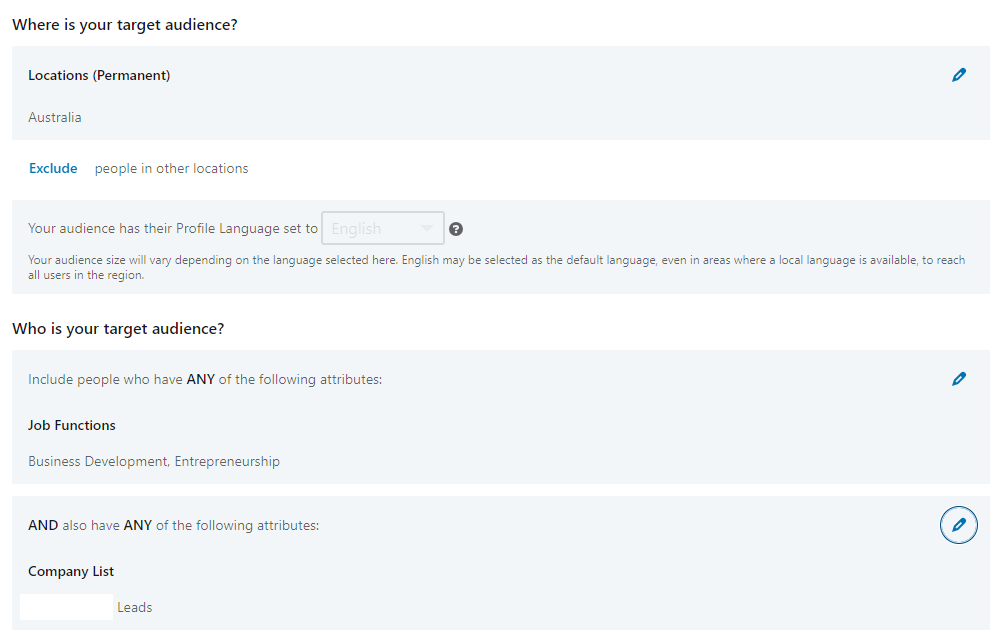
The entire target range consists of 530 employees in the target region. There is no need to narrow the scope down purely because the resulting audience would be too small for LinkedIn to launch the campaign in the first place. The ad itself looked like this:

A brief headline and a direct CTA were both placed in the advertisement, while the download button led to a dedicated LinkedIn lead generation form:

The form requested a number of basic parameters in order to make sure that the leads can be qualified as enterprise ones – company name, company size, work phone number, work email, and so on. The results of that campaign are presented below:
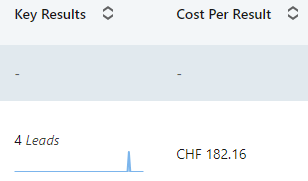
182 CHF per lead is not all that high, considering that it targets enterprise-level organization and how hyper-targeted the campaign was intended to be. The conversion rates might have been somewhat low, but the quality of enterprise leads more than made up for it.
Relationship expansion in the enterprise account
The aforementioned ABM strategy is not just used for a new customer acquisition. It can even be applied to expand existing relationships in an enterprise-grade account, finding cross-selling and upselling opportunities while providing more value to the existing customer base.
My next example is an ABM campaign on LinkedIn that targets NASA research centers while representing the same software vendor as above, which already has a contact with these research centers.
My goal here was to target 6,300 employees from NASA – every single person with an IT job function, as follows:
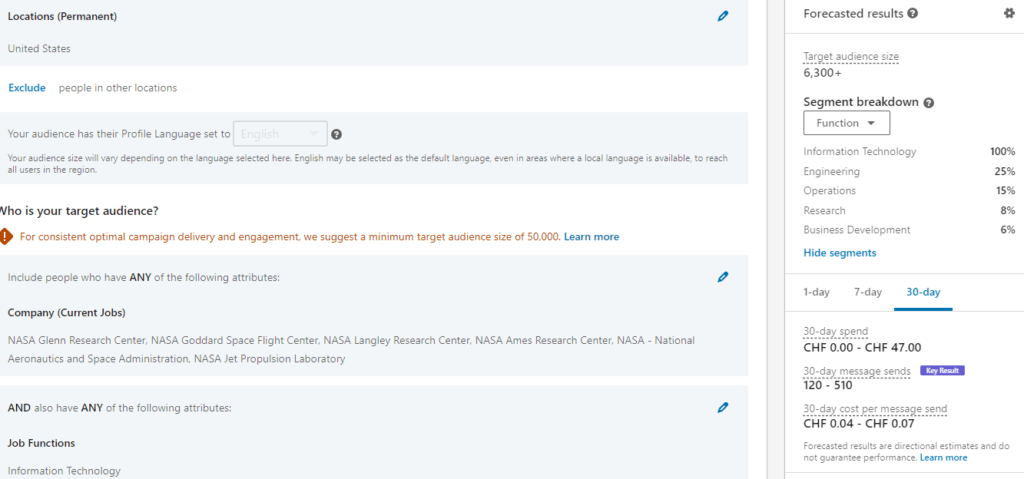
The campaign’s messaging included a disaster recovery plan template and a number of IT whitepapers that are presumably used in NASA labs, such as Proxmox, Kubernetes, MS SQL, etc.

The following screenshot is a showcase of this campaign’s results:

The end result was 430 sends, 208 opens, and an average lead cost of roughly 200 CHF with a 48.4% total open rate. The unusually high interest among the target audience signified the success in highlighting specific technologies in our whitepaper collection. More information about both of these examples, including detailed metrics for each advertisement, can be found in this article.
Conclusion
Enterprise lead generation is far from a one-time effort. It is a continuous process that is optimized and expanded upon over time. It can be very difficult to work with due to the necessity of understanding your target audience while also being resourceful and flexible enough to keep delivering value to the prospect while adapting to all the new changes in the market at the same time.
Continuous improvement is the key to success in this industry, especially when it comes to long sales cycles and the sheer number of different lead generation methods that are used to acquire enterprise-grade clients.
There are also plenty of factors and changes that might affect the lead generation process in the future. The recent explosion of popularity for AI-assisted tools drives the adoption of AI and ML into different industries, including marketing (with AI-driven conversation management being the most recent example).
The same could be said for the growing privacy concerns and an increasing number of data-related regulations being created. The third-party cookies are being slowly phased out as time goes on, forcing marketers to look for new ways of building relationships and tracking customer behavior.
Additionally, the divide between sales and marketing teams is as thin as ever, and the result of this, which is bound to happen in the near future, is going to break down communication silos between departments for a more seamless experience that combines the strengths of the two departments while mitigating their weaknesses.
These are just a few examples of industry trends that marketers should be aware of at all times. The marketing industry is very flexible and tends to change drastically on a regular basis, forcing marketers to keep up in order to avoid being left behind.
Implementing different strategies from this article should make it easier to create a robust enterprise lead generation framework with a high rate of success. However, keeping track of emerging trends and other industry news is also an important consideration here that can have a lot of value in specific situations.
Frequently Asked Questions
What is the biggest difference between lead generation for SMBs and large enterprises?
Complexity is an obvious answer to this question. To a certain degree, the difference itself is more between the company size and less between the methods. Of course, the marketing approaches are also dramatically different, but all of the changes are the byproduct of the fact that some companies are small, with small budgets and limited head counts, while others are massive powerhouses with tens of thousands of employees and offices all over the planet. The business size draws the line between long and short sales cycles, affects decision-making complexity, and more.
How important is lead nurturing for enterprise leads?
Lead nurturing is an irreplaceable part of interacting with enterprise leads since the average sales process is incredibly long and covers more than one decision-maker at once. Being able to keep all the necessary individuals engaged and interested after the lead generation process is the key to scoring a successful sale.
How collaborations and partnerships help with enterprise lead generation?
Not only do partnerships and collaborations offer credibility by association, but they also tend to provide access to a broader audience since partnering with complementary businesses opens up their networks for you, increasing the success rates of lead generation processes.
What is the easiest way to increase the quality of enterprise leads?
Refining the evaluation and targeting processes is the most sure-fire way of increasing the lead quality in the context of enterprise clientele. A clear definition of an ICP tends to significantly increase the probability of conversion for each lead. You can find more ways to get better lead quality in my corresponding article.
What parts of the enterprise lead generation process can I automate?
The total range of enterprise lead generation processes that can be automated is surprisingly wide. You can automate email marketing, reporting, and analytical processes of the sequence, along with lead capture, CRM integration, and even lead qualification. Some of these processes can even be enhanced with the power of AI to be even more efficient than ever before.


